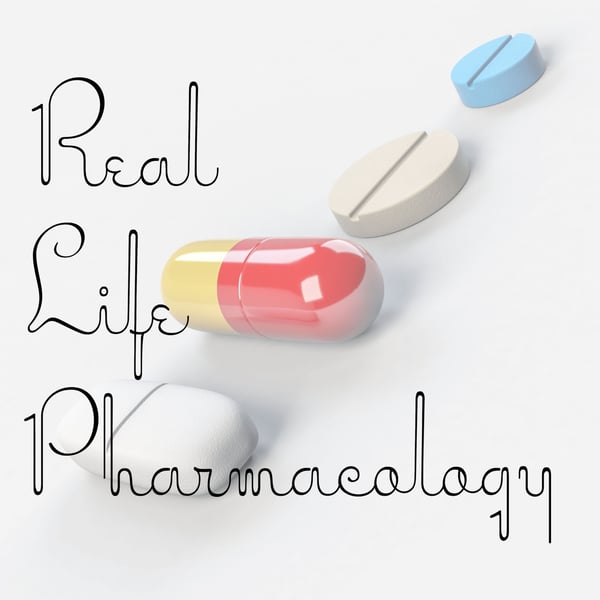Urinary Anticholinergics RLP Episode 25
Real Life Pharmacology - Pharmacology Education for Health Care Professionals
Eric Christianson, PharmD; Pharmacology Expert and Clinical Pharmacist
5 • 716 Ratings
🗓️ 26 July 2018
⏱️ 12 minutes
🧾️ Download transcript
Summary
Transcript
Click on a timestamp to play from that location
| 0:00.0 | Welcome back to the Real Life Pharmacology podcast. |
| 0:04.0 | As always, definitely check out Real Life Pharmacology.com. |
| 0:07.0 | I've got that free giveaway. It's a great resource. |
| 0:10.0 | Top 200 drugs where I highlight three really important things from each of those top 200 medication. |
| 0:17.0 | Definitely things you could be tested on throughout your nursing, pharmacy, |
| 0:22.4 | med school, whichever health care profession you're in. |
| 0:25.9 | If you're taking a pharmacology class, you can definitely be tested on those things. |
| 0:30.2 | So free and easy to go subscribe and get that free resource for you. |
| 0:37.2 | So today I'm going to talk about antichcholinergic medications. |
| 0:42.8 | Probably more specifically I'm going to talk about some of the urinary anticholinergic medications. |
| 0:49.7 | So examples here, oxybutinine, brand name Ditropan, Tolteridine, Detrol, a couple others, Daraphenison, |
| 0:59.3 | Nablex, Solophenison, Vesacare. |
| 1:02.5 | Now, the mechanism of action and where these medications might be used, these meds block what are called muscarinic receptors, |
| 1:13.8 | and specifically in the bladder urinary tract region, it is the M3 receptor. |
| 1:20.9 | I've definitely seen that come up on test questions and different things like that. |
| 1:25.9 | So they block these muscarinic receptors, and in the bladder and the urinary tract region, |
| 1:33.5 | that can cause a contraction which can increase urine volume in the bladder, and it can also |
| 1:43.5 | potentially reduce frequency and urge. |
| 1:49.4 | So probably the most frequent situation you're going to see these meds used in is urinary frequency |
| 1:57.2 | and urge incontinence. |
| 2:00.2 | Now, with that said, I mentioned that they do kind of cause |
| 2:04.6 | constriction. They kind of help block or reduce the urine flow from coming out. So we do have |
... |
Please login to see the full transcript.
Disclaimer: The podcast and artwork embedded on this page are from Eric Christianson, PharmD; Pharmacology Expert and Clinical Pharmacist, and are the property of its owner and not affiliated with or endorsed by Tapesearch.
Generated transcripts are the property of Eric Christianson, PharmD; Pharmacology Expert and Clinical Pharmacist and are distributed freely under the Fair Use doctrine. Transcripts generated by Tapesearch are not guaranteed to be accurate.
Copyright © Tapesearch 2025.

